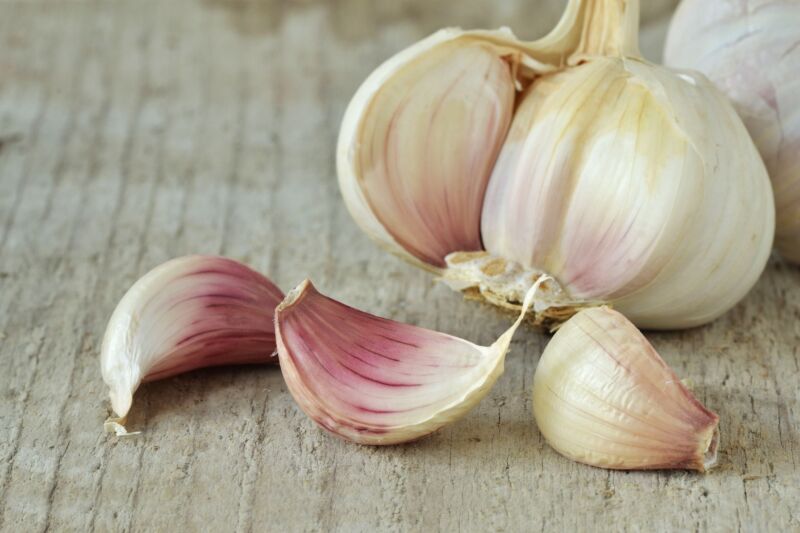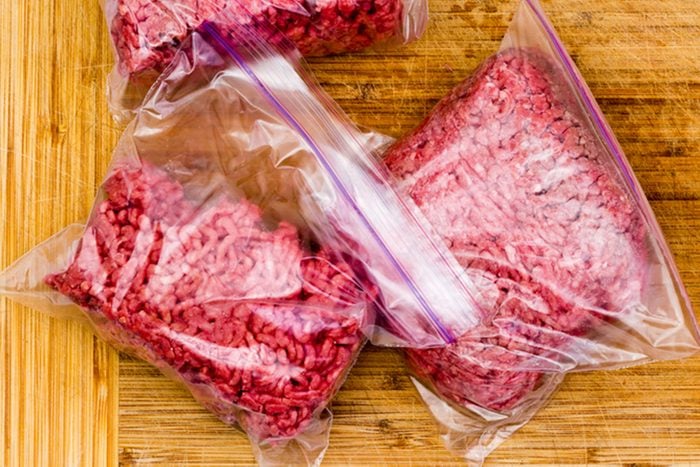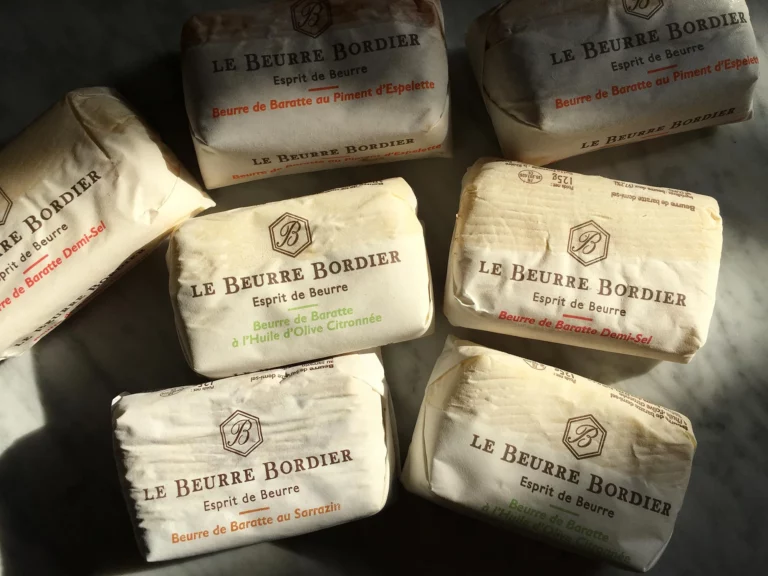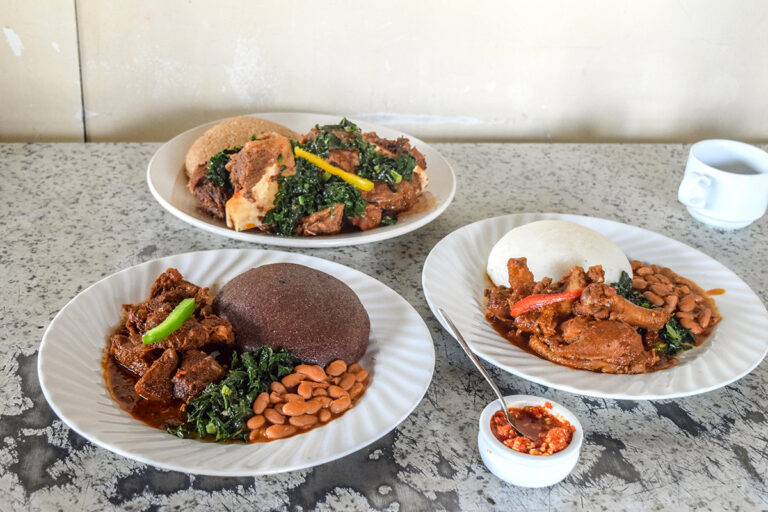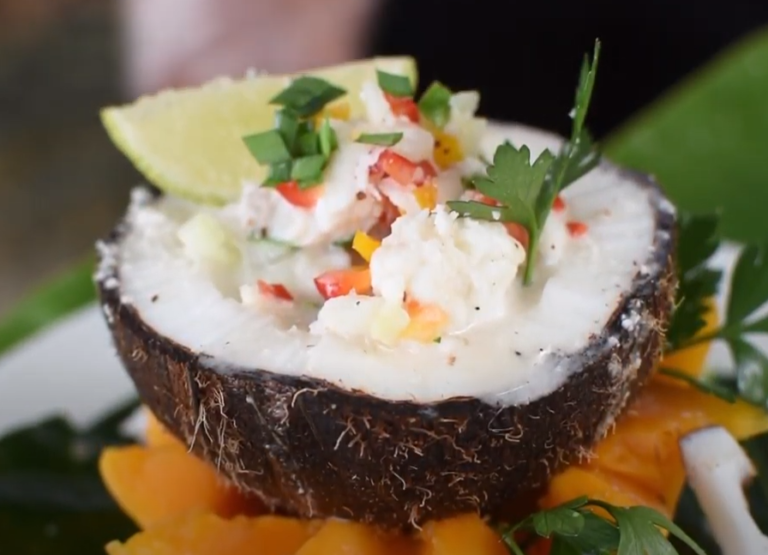How Much Is a Clove of Garlic?
As a home cook, I rely on garlic to add flavor to many of my dishes. Its pungent and savory qualities bring depth and aroma to soups, sauces, meat, and vegetable recipes. But when a recipe calls for a certain number of garlic cloves, how can I be sure to measure correctly? Understanding exactly how much a clove of garlic equals in teaspoons, tablespoons, or powder will help me follow recipes accurately. Let’s take a closer look at what constitutes a clove and how to quantify garlic amounts.
What Is Garlic?
Garlic is a flowering plant that originated in Central Asia and is closely related to chives, leeks, onions, and shallots. The most commonly used part of the plant is the bulb, which grows underground and contains multiple garlic cloves. Each clove is covered with a pale, paper-like skin and contains a central shoot that can potentially produce a new bulb if planted. As an herb, garlic is prized for its pungent, spicy flavor that adds aroma and savoriness to food. It can be used fresh, dried, or powdered. Garlic’s versatility as a seasoning makes it a staple in many cuisines around the world.
Garlic Clove vs Garlic Bulb
It’s important to understand the difference between a garlic clove and a garlic bulb when following recipes. A clove refers to one of the individual interior segments of the bulb. The clove is surrounded by a papery skin that should be peeled off before using. A garlic bulb contains multiple cloves, usually around 10-12, enclosed within an outer skin. The cloves within a single bulb may vary in size, with some noticeably smaller or larger than others. If I plant a garlic clove and let it grow, it will produce an entirely new bulb. Being able to identify cloves versus bulbs allows me to accurately measure garlic amounts.
How Much Is a Clove of Garlic?
When a recipe calls for garlic, the measurement is typically in cloves, not bulbs. But what if I want to use minced, chopped, or powdered garlic instead of chopping fresh cloves? Here are some garlic equivalencies to keep in mind:
- 1 clove = 1 teaspoon of minced garlic
- 2 cloves = 2 teaspoons of minced garlic
- 3 cloves = 1 tablespoon of minced garlic
- 6 cloves = 2 tablespoons of minced garlic
- 12 cloves = 1/4 cup of minced garlic
For garlic powder, the ratio is slightly different:
- 1 clove = 1/8 teaspoon of garlic powder
Garlic powder has a more concentrated flavor than fresh garlic, so less is needed. Here is how garlic powder compares to minced fresh garlic:
- 1/4 teaspoon garlic powder = 1 teaspoon minced fresh garlic
- 3/4 teaspoon garlic powder = 1 tablespoon minced fresh garlic
Keeping these garlic clove equivalencies in mind will help me substitute minced or powdered garlic for chopped cloves in any recipe.
What Is the Size of a Garlic Clove?
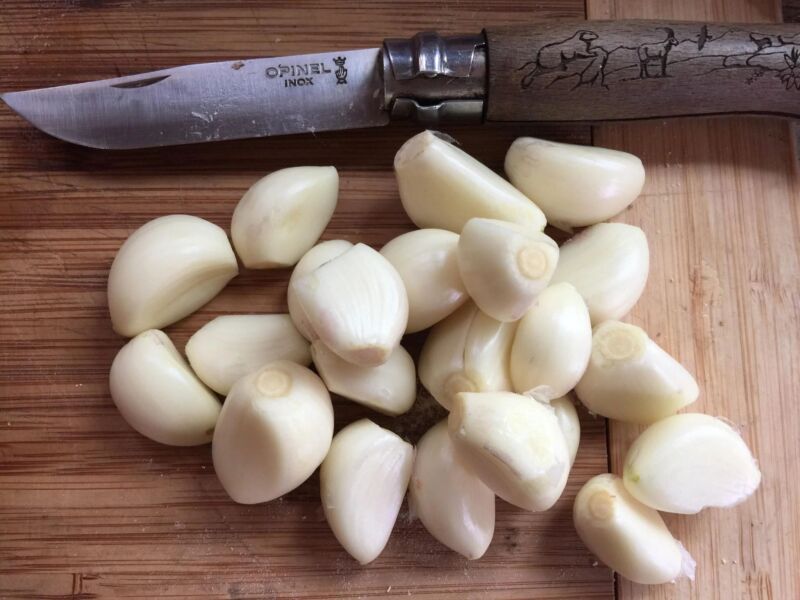
Not all garlic cloves are the same size. Cloves can range from small to large, depending on the variety and individual bulb. On average:
- A small clove is approximately 1 inch in length and 3/8 to 1/2 inch in diameter.
- A large clove is approximately 1.25 to 1.4 inches in length and 5/8 to 3/4 inch in diameter.
In the supermarket, a clove of garlic usually weighs between 4 to 8 grams. Hardneck garlic varieties often have larger cloves, around 10 to 16 grams each.
Knowing these size ranges helps provide a mental picture of how much a clove of garlic equals in cooking. Even if I don’t have a scale to weigh it directly, I can make a rough visual approximation of small, medium or large cloves called for in recipes.
What Does a Garlic Clove Look Like?
Garlic cloves have an irregular shape somewhat like a teardrop or curved triangle. They come to a more pointed end at the top and have a wider, root-like base where they attached to the bulb. The skin color and thickness depends on the variety:
- Hardneck garlic has a brownish skin with a hint of purple.
- Softneck garlic skin ranges from rusty red to light brown and is usually thinner.
Examining the papery covering and feeling the texture of the clove can help me distinguish between the two main types when shopping. This also gives me a better visual sense of what a clove looks like compared to the entire bulb.
How to Tell If Garlic Has Gone Bad
To make sure my garlic cloves are fresh, I look for these signs:
- A fresh clove has a bright white color with no dark or gray patches.
- An aged clove develops a yellowish-brown complexion.
I also do a quick squeeze test. A fresh clove should feel firm. If it gives way easily under pressure or feels rubbery, the garlic is past its prime and shouldn’t be used.
Storing garlic correctly helps prolong its life. Keep bulbs in a cool, dry spot out of direct sunlight. Once separated and peeled, cloves should be refrigerated in an airtight container to maintain freshness. Proper storage prevents sprouting and drying out.
The Bottom Line
When cooking with garlic, it’s important to understand how cloves relate to bulbs and how to quantify the amount needed. Whether I’m using fresh, minced, or powdered garlic, keeping these tips in mind allows me to accurately measure:
- A clove of garlic equals 1 teaspoon minced, or 1/8 teaspoon powdered.
- 3 cloves gives me 1 tablespoon of minced garlic.
- Garlic powder is more concentrated than fresh, so less equals more.
- Cloves vary in size, but average 1 to 1.4 inches long.
- Hardneck garlic tend to have larger cloves than softneck.
- A freshly peeled clove should be firm and bright white.
Knowing the equivalencies for fresh, minced, granulated, and powdered garlic ensures my recipes turn out perfectly flavored every time. With the right amount of garlic, I can transform any dish from bland to bold and mouthwatering.
